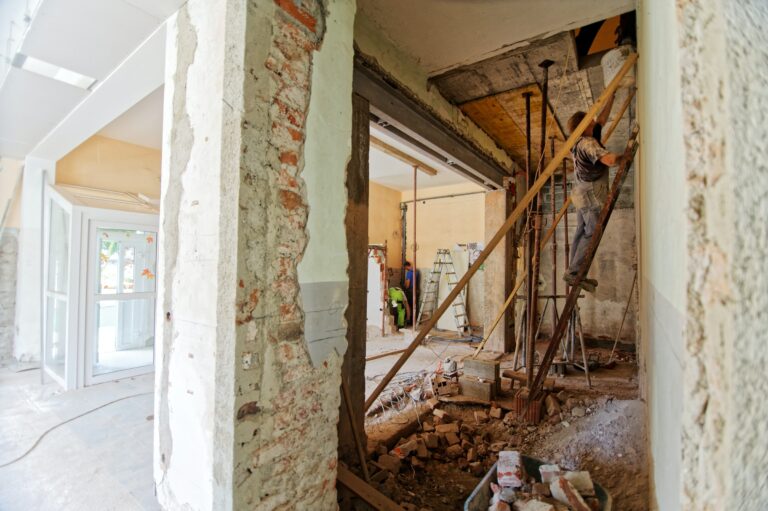Currently in Australia and generally in most other countries that have a value-added tax (VAT) or goods and services tax (GST), new residential premises are treated as taxable supplies while used residential premises are treated as input taxed supplies or outside the scope of the GST. This blog examines a contentious issue in this setting: when do renovated premises cross the line from used to new in the eyes of the law?
My recent journal article considers the main laws in Australia, Canada and the European Union regarding whether supplies of renovated residential premises are new or used. It offers a statutory solution to this issue.
GST treatment of substantially renovated residential premises
Under the prepaid system used in most countries, upfront GST (as it is called in Australia) is charged on the first purchase of goods from a taxable person. Later supplies of the goods between unregistered consumers are not included in the GST base. An assumption is made that the purchase price of goods represents the present value of all future consumption of the goods. The GST treatment of supplies of residential premises follows this approach.
Therefore, the sale of new residential premises is taxable, whereas sales of used residential premises and residential leases are input taxed supplies or outside the scope of the GST. This means no tax is imposed on the resale, but the price includes some embedded GST that had been included in the cost of acquisitions. Any value added after the first sale is not included in the GST base. An exception to this is that legal rules generally allow for the supply of substantially renovated residential premises to be regarded as equivalent to the supply of new residential premises.
Over time, most residential premises go through some renovations. However, these do not necessarily change the value of residential premises. Where a property requires substantial renovations, then it is assumed that most of the value of the residential premises that was included in the GST base at the time that it was first sold has been consumed. If new value is created because of the renovation, the initial tax does not cover the later consumption. The sale of substantially renovated residential premises is intended to replicate the effect of the GST on the initial sale of new residential premises.
Effectively it provides for upfront taxation of the present value of future consumption that has not previously been subject to GST. This is the benchmark goal and rationale for legislated approaches in jurisdictions with a GST or VAT that seek to regard supplies of substantially renovated residential premises as taxable.
When does a renovation make used residential premises new again?
The question of when a renovation transforms used residential premises into new residential premises has been the subject of litigation in almost all GST jurisdictions in which such a distinction is made. This is an important issue given that housing services are so frequently consumed and expenditure on housing often comprises a large percentage of total consumption of an individual. There are also implications for whether a property developer or builder is entitled to claim input tax credits for costs relating to the purchase of the property, and work done on it. However, this is an issue which has been subject to little scholarly discussion.
My recent journal article provides a discussion of some of the main legal issues that have arisen in Australia, Canada and the European Union regarding the GST treatment of such supplies. It compares and evaluates the legal approaches taken in these jurisdictions to these issues by reference to the benchmark goal of creating a new taxing point where a substantial renovation has led to new value being added.
The analysis in this article indicates that whilst in some jurisdictions there have been legislative definitions of key terms and administrative guidance provided, the effect of this is sometimes unnecessarily restrictive. This produces results which are inconsistent with the goal where significant value is excluded from being regarded as leading to a new taxing point. Further, deciding whether work done to residential premises should lead to it being new again based on the facts of the situation leads to unnecessary uncertainty.
A statutory solution
To provide certainty regarding the GST characterisation of renovations, a statutory rule is needed regarding when renovations will lead to the creation of a new taxing point. Like the statutory rules regarding capital allowances in Australia, the rule relating to the GST treatment of renovations could be based on a cost threshold. It could be that if the cost of the work done to the residential premises overtime adds up accumulatively to 50% or more of its resale value, then they will be regarded as new residential premises. If the cost of the work done is less than this, the resale of the residential premises will be input taxed or outside the scope of GST.
The reason for the threshold being as high as 50% is that it would exclude minor changes that do not add significant value from being regarded as resulting in a new taxing point. The rule would also mean that when residential premises that have been renovated are sold, most of the value bought by the new owner would relate to the value added to the property because of the renovation. The resale value is referred to in this recommended test as this is the value of the residential premises that renovations affect. It would not be easy for taxpayers to structure their affairs so that the costs of renovations add up to slightly less than 50%, as they would be unlikely to know the resale value at the time of the renovations.
The recommended 50% cost test bears some similarity to an administrative rule used in Canada which suggests that ‘generally, 90% or more of the interior of an existing house is the minimum that has to be removed or replaced to qualify as a substantial renovation’. It seems application of this rule sometimes has an unnecessarily restrictive effect, excluding significant value added to residential premises from being regarded as creating a new taxing point. On the other hand, the 50% cost test, whilst still involving an arbitrary percentage, is likely to result in outcomes which are more consistent with the benchmark goal. It would mean that most of the value purchased by the new owner would be attributable to value added to the residential premises, which means that it was not subject to GST on any previous sale.
The Canadian test also requires arbitrary judgments about whether enough of the interior of residential premises has been removed or replaced, whereas the recommended 50% cost test would be much more certain and easier to comply with and administer. Costs could be verified by receipts.
This article is based on Peacock, Christine, (2021), What does it take to make a house new? Australian Tax Review 50(1), pp. 22-42.





Recent Comments